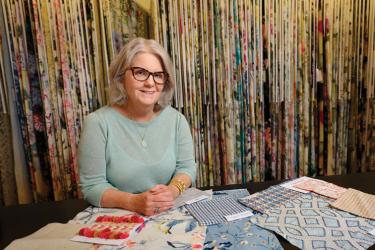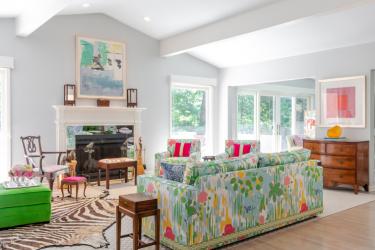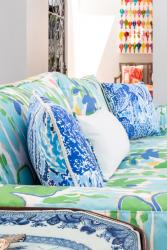Decisions, Decisions Fabric selections will differ according to how the room will be used. For family rooms and home offices, durability is the key. In living rooms, primary bedrooms and sitting rooms, more luxurious fabrics can be used. Though the type of fabric used in each space may be different, common colors, textures and patterns can be used throughout to link each room together.
Think “Durable” There have been major advancements in the textile industry in terms of durability. There is now a group of indoor fabrics referred to as “performance fabrics.” These textiles are constructed with properties that add durability. The availability of these fabrics has grown substantially in the past few years. Performance fabrics, like most synthetics, are petroleum based and contain a high percentage of chemicals. These are all factors to consider when selecting fabrics for your home. There are also fabrics constructed of natural fibers (linen, wool, cotton) that are durable with fewer chemicals added. Some, like wool, are naturally stain resistant.
Perfecting Patterns Scale, texture and color all come into play when mixing patterns. If you use four patterns in bright, vibrant colors, the space will look and feel different than if you used the same four patterns in soft, quiet neutrals. The number of patterns used depends on the overall style and feel of the room. Each homeowner will have their own comfort level of mixing patterns. The scale of patterns used can be determined by the size of the room. Fabrics with large, open patterns work well in an open space with high ceilings.
Mixing Textures Fabric textures in a room add interest and depth to the design. A room of all heavy textures will be too much of a good thing. Mixing texture creates warmth and interest. For example, if you have a sofa with a white linen/cotton blend, using a wide, decorative tape on the skirt can add interesting texture without overcomplicating things. Adding smooth, printed cotton pillows adds just another layer. Consider mixing other textures in with your pillow, ottoman and blanket choices.
Push Your Limits The most important part of choosing fabrics for your home is finding the colors, patterns and textures YOU love. Push yourself a bit out of your comfort zone; try a combination of patterned and solid fabrics. Once you see all of your options, then you can decide what is the best combination for you.









